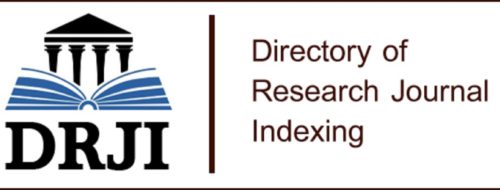Evaluation of the impact of wastewater from shrimp culture through forced exposure tests: guppy allevines (Poecilia reticulata) as bioindicator.
Investigation article
Keywords:
Shrimp farm, wetland, wastewaterAbstract
The shrimp activity is of great importance for foreign trade, which is why it has increased in Ecuador in recent years, shrimp ponds are built on mangrove soils and wetlands, these ecosystems that are of ecological importance to the country and that are being affected by the growth of this activity. For this reason, this work proposes the use of ecotoxicological tests of forced exposure to evaluate the effect of wastewater from shrimp culture using Guppy fingerlings (Poecilia reticulata). A forced exposure trial was conducted to evaluate the potential contamination of the shrimp's wastewater. A sample of wastewater from a shrimp farm located in the La Segua Wetland was diluted with drum water to obtain 4 exposure treatments (25%, 50%, 75 and 100% residual water), plus a control (0% residual water). Fish tanks of 12x12x12 cm were used to carry out the test. In each tank, 6 Guppy fingerlings with an average size of 2.72 ± 0.2 cm were placed. The trial lasted 5 days, and each treatment was tested in triplicate. Every day of the trial a record of responses was taken, such as swimming capacity and mortality. The results show that the species P. reticulata did not show mortality or loss of swimming capacity during the test. In addition, an unforced exposure test was carried out to evaluate the sensitivity of the species during its exposure to the shrimp's residual water, demonstrating that this species showed a leakage response from the first hour of exposure in all the treatments exposition.
Keywords: Shrimp farm, wetland, wastewater.
Downloads
References
Edison Molina. (2012). Documento: Tesis Estudio comparativo de los sitios Ramsar en el Ecuador como oferta turística del patrimonio natural del Ecuador. Quito-Ecuador.
Francisco de Paula Gutiérrez (et. al.) (2012) Catálogo de la biodiversidad acuática exótica y trasplantada en Colombia: moluscos, crustáceos, peces, anfibios, reptiles y aves. Disponible en http://repository.humboldt.org.co/handle/20.500.11761/31377
Gómez W, et al. (2008). Toxicidad aguda y riesgo ambiental del fipronil para Guppy (Poecilia reticulata). Disponible en https://dialnet.unirioja.es/descarga/articulo/3989084.pdf
GPM. (2018) Disponible en http://www.manabi.gob.ec/11991-humedal-la-segua-se-beneficia-recursos-del-gobierno-provincial.html
Iannacone, j. Et al. (2007). Efectos ecotoxicologicos del cartap sobre poecilia reticulata ‘‘guppy’’ (poecilidae) y paracheirodoninnesi ‘‘neon tetra’’ (characidae). Disponible en: https://scielo.conicyt.cl/scielo.php?script=sci_arttext&pid=S0717-65382007000200005
LA SEGUA. s.e. Disponible en http://suia.ambiente.gob.ec/web/humedales/la-segua (¿Qué es el Carbono Neutral? - SUIA).
Lenntech. (2018). Conductividad del agua. Obtenido de https://www.lenntech.es/aplicaciones/ultrapura/conductividad/conductividad-agua.htm
M. Bravo; C. Suarez. (2007). Documento: Implementación de la primera etapa del plan integral de gestión socio ambiental 9PIGSA) del sistema de trasvases Manabí.
MAE. (2010). Documento: Ficha Informativa de los Humedales de Ramsar (FIR) Categorías aprobadas en la Recomendación 4.7 y modificadas por la Resolución VIII.13 de la Conferencia de las Partes Contratantes. 1-2pp
Manabí, hogar de bellos humedales. 2013. s.e. Disponible en http://www.ambiente.gob.ec/manabi-hogar-de-bellos-humedales/ (Ministerio del Ambiente).
Pacheco, AM; Vera, MZ; Palma, CR. Análisis de las condiciones geográficas y ecológicas del humedal La Segua, provincia de Manabí, Ecuador. s.e. Disponible en https://revistas.utm.edu.ec/index.php/latecnica/article/view/809 (Vista de Comportamiento organizacional positivo: las implicaciones del engagement en el entorno laboral).
Patricio Noles, Cumanda Philco, Carlos Delgado, Loor Eudaldo, Mario López. Calidad de agua del humedal la segua-chone mediante su ictiofauna como bioindicador. s.e. Disponible en http://www.ueb.edu.ec/app/talentos/images/PDF/REVISTA-TALENTOS/VOLUMEN-IV-N1/CALIDAD%20DE%20AGUA%20DEL%20HUMEDAL%20LA%20SEGUA-CHONE%20MEDIANTE.pdf
Ramsar.s.e. Documento: Convención relativa a los humedales de importancia Internacional Especialmente como Hábitat de aves acuáticas.
SISTEMA NACIONAL DE ÁREASPROTEGIDAS DEL ECUADOR. s.e. Disponible en http://areasprotegidas.ambiente.gob.ec/es/content/sitios-ramsar (Inicio).
Zapata-Pérez O; Pedrero Ríos JM. Ensayo de toxicidad aguda con larvas y juveniles de los peces tilapia, carpa y cíclidos. s.e. Disponible en http://www2.inecc.gob.mx/publicaciones2/libros/573/cap11.pdf
Published
How to Cite
Issue
Section
License
Copyright (c) 2018 Revista de Ciencias del Mar y Acuicultura YAKU

This work is licensed under a Creative Commons Attribution-NonCommercial-ShareAlike 4.0 International License.


1.jpg)













